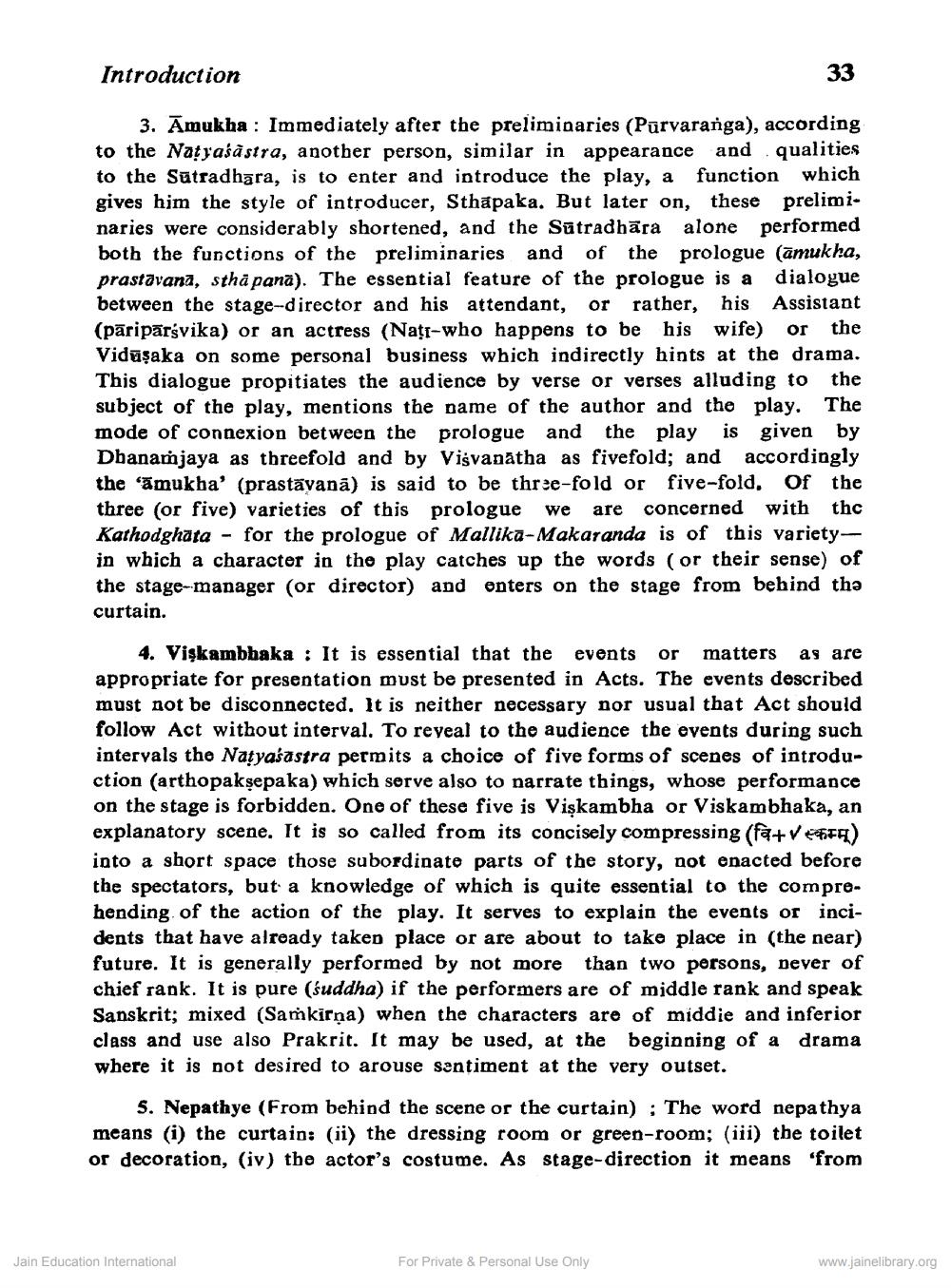________________
Introduction
3. Amukha: Immediately after the preliminaries (Parvaranga), according to the Natyasastra, another person, similar in appearance and qualities to the Sutradhara, is to enter and introduce the play, a function which gives him the style of introducer, Sthapaka. But later on, these preliminaries were considerably shortened, and the Sutradhara alone performed both the functions of the preliminaries and the prologue (amukha, prastavana, sthapana). The essential feature of the prologue is a dialogue between the stage-director and his attendant, or rather, his Assistant (päriparivika) or an actress (Natr-who happens to be his wife) the Viduşaka on some personal business which indirectly hints at the drama. This dialogue propitiates the audience by verse or verses alluding to the subject of the play, mentions the name of the author and the play. The mode of connexion between the prologue and the play is given by Dhananjaya as threefold and by Visvanatha as fivefold; and accordingly the 'amukha' (prastāvanā) is said to be three-fold or five-fold. Of the three (or five) varieties of this prologue we are concerned with the Kathodghata for the prologue of Mallika-Makaranda is of this varietyin which a character in the play catches up the words (or their sense) of the stage-manager (or director) and enters on the stage from behind the
curtain.
33
4. Viskambhaka: It is essential that the events or matters as are appropriate for presentation must be presented in Acts. The events described must not be disconnected. It is neither necessary nor usual that Act should follow Act without interval. To reveal to the audience the events during such intervals the Natyalastra permits a choice of five forms of scenes of introduction (arthopakṣepaka) which serve also to narrate things, whose performance on the stage is forbidden. One of these five is Viskambha or Viskambhaka, an explanatory scene. It is so called from its concisely compressing (fa+VeSFF) into a short space those subordinate parts of the story, not enacted before the spectators, but a knowledge of which is quite essential to the comprehending of the action of the play. It serves to explain the events or incidents that have already taken place or are about to take place in (the near) future. It is generally performed by not more than two persons, never of chief rank. It is pure (suddha) if the performers are of middle rank and speak Sanskrit; mixed (Samkirna) when the characters are of middie and inferior class and use also Prakrit. It may be used, at the beginning of a drama where it is not desired to arouse sentiment at the very outset.
5. Nepathye (From behind the scene or the curtain): The word nepathya means (i) the curtain: (ii) the dressing room or green-room; (iii) the toilet or decoration, (iv) the actor's costume. As stage-direction it means 'from
Jain Education International
For Private & Personal Use Only
www.jainelibrary.org




